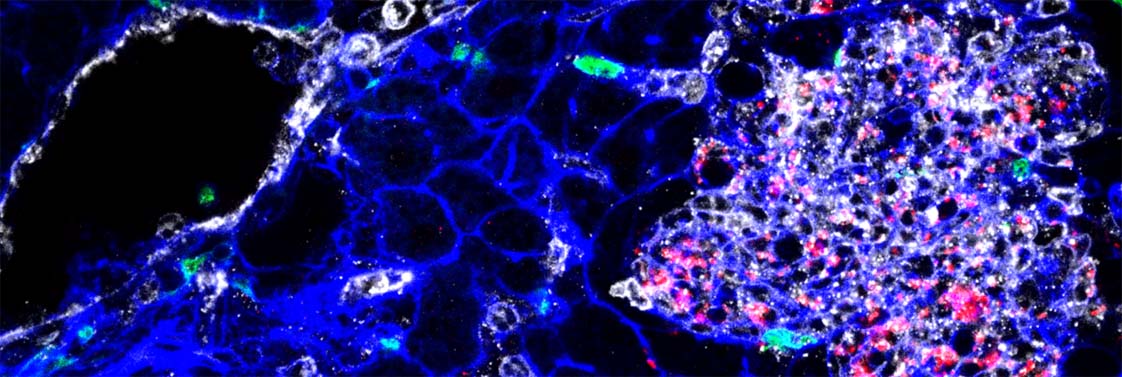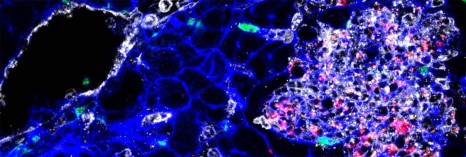Researchers at Unit 1018 “Centre for Research in Epidemiology and Population Health” (Inserm/Paris-Sud University) at Gustave Roussy have focused on the proportion of breast cancers attributable to various risk factors. The analysis, conducted among 67,634 women in the French E3N cohort, shows that postmenopausal breast cancers are more often attributable to “behavioural” factors, such as an unhealthy diet, excess weight and alcohol consumption than “non-behavioural” factors. These data suggest that by preventing these behaviour patterns, the number of breast cancers during menopause would decrease.
The article detailing these findings is published in the International Journal of Cancer, 04 February 2016.
(c) Fotolia
Breast cancer is the most frequently diagnosed cancer among women worldwide. The number of “behavioural” risk factors, such as alcohol consumption and diet, and “non-behavioural” factors (family history, age at first menstruation and menopause, etc.) were already identified in the literature. Françoise Clavel-Chapelon, Research Director at Inserm and Laureen Dartois have focused on the proportion of breast cancer attributable to these factors and the combined impact of all of these risk factors, which has been poorly studied until now.
Researchers from the Inserm team “Generations and Health” at the Centre for Research in Epidemiology and Population Health (CESP, Inserm Unit 1018) have assessed the proportion of breast cancers diagnosed before and after menopause that are attributable to behavioural and non-behavioural risk factors. The study was conducted among 67,634 French women aged from 42 to 72 years old at inclusion in the French E3N cohort study.
Following 15 years of monitoring, 497 women were diagnosed with breast cancer before menopause and 3,138 after menopause.
“Premenopausal breast cancer is 61.2% attributable to non-behavioural factors and only 39.9% attributable to behavioural factors. Breast cancers diagnosed before menopause are not statistically attributable to any single behavioural factor.” explains Françoise Clavel-Chapelon, Inserm Research Director.
By contrast, the researcher clarifies that “over half (53.5%) of postmenopausal cancer cases could have been avoided by adapting behaviour.”
The main behavioural factors, which we can influence, that contribute to the onset of postmenopausal cancer are (percentage of avoidable cancers in brackets): use of hormone therapy for menopause (14.5%); an unbalanced diet (10.1%); alcohol consumption (more than one glass per day) (5.6%); excess weight in adulthood (BMI>=25kg/m2) (5.1%) and low weight during puberty (17.1%). It should be noted that hormone therapy for menopause is used much less in the last 10 years and that compositions have changed following the E3N results. Furthermore, excess weight during puberty is also included in these factors, although researchers are not able to fully explain the mechanism.
The authors conclude that “not engaging in these behaviour patterns may prevent over half of diagnosed postmenopausal breast cancers.”
They suggest continuing human and social science studies to understand individual behaviour choices, as well as developing and assessing interventions in order to modify them.
The E3N study, or Epidemiological Study of women in MGEN Mutuelle Générale de l’Education Nationale, a health insurance plan mainly covering teachers), headed by Françoise Clavel-Chapelon, Inserm Research Director, is a prospective cohort study of approximately 100,000 French female volunteers born between 1925 and 1950, and monitored since 1990.
Since 1990, women have completed and returned a self-administered questionnaire every 2-3 years. They are asked both about their lifestyle (diet, use of hormone treatments, etc.) and about changes in their state of health.
The E3N study is supported by four founding partners: Inserm, the French National Cancer League, Gustave Roussy Institute and MGEN.
The E4N study has just been launched, and is aimed at extending the E3N study by monitoring family members of E3N women. Ultimately, E4N will include three generations: E3N women and the fathers of their children constitute the first generation; their children, the second; and their grandchildren will form the third generation. Monitoring the three generations will make it possible to collect information on behavioural and environmental factors at different periods of life. The main objective of the E4N study is to study health in relation to environment and modern lifestyle in subjects from the same family with a shared genetic background and environment.





